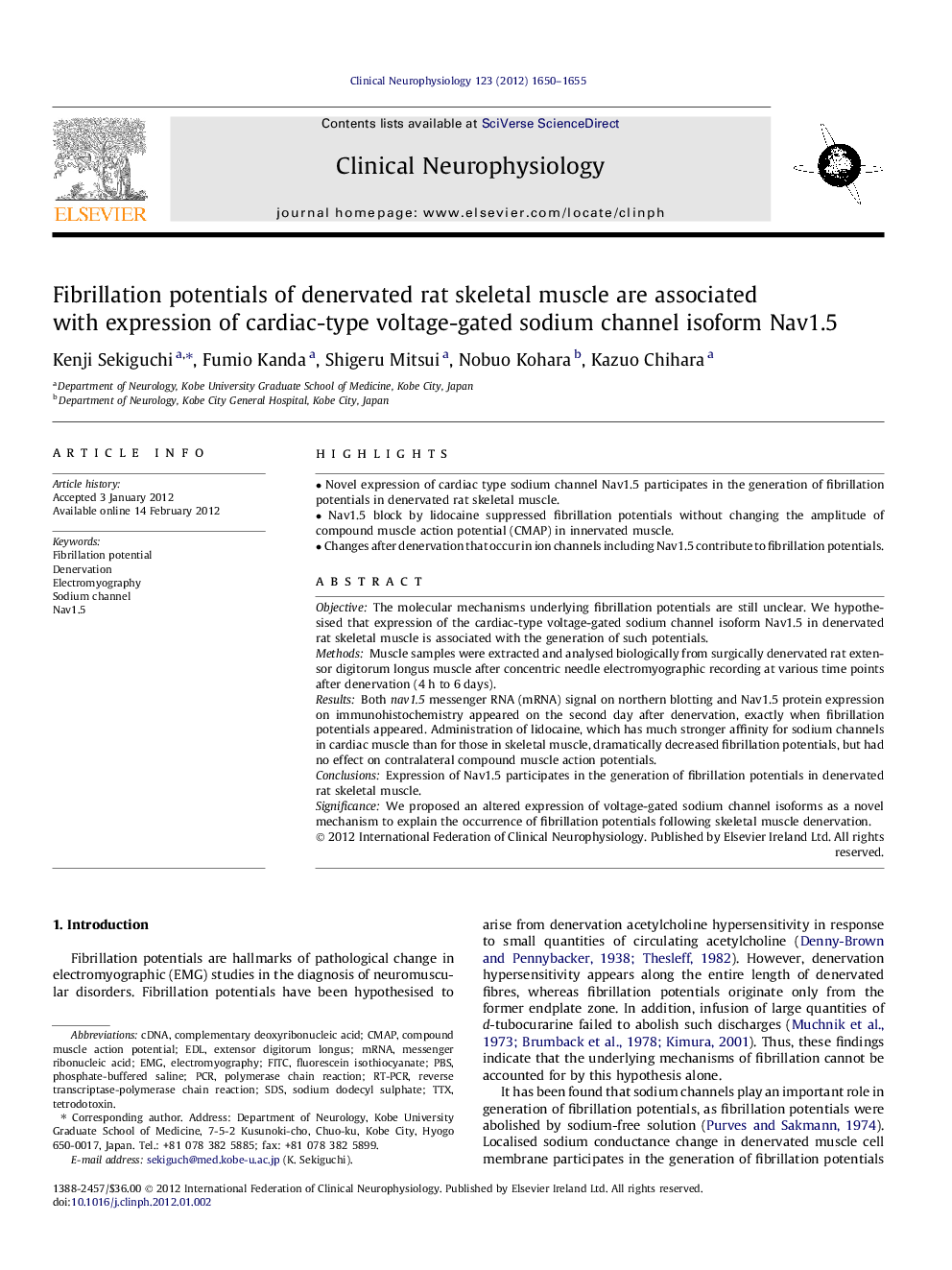| Article ID | Journal | Published Year | Pages | File Type |
|---|---|---|---|---|
| 3043433 | Clinical Neurophysiology | 2012 | 6 Pages |
ObjectiveThe molecular mechanisms underlying fibrillation potentials are still unclear. We hypothesised that expression of the cardiac-type voltage-gated sodium channel isoform Nav1.5 in denervated rat skeletal muscle is associated with the generation of such potentials.MethodsMuscle samples were extracted and analysed biologically from surgically denervated rat extensor digitorum longus muscle after concentric needle electromyographic recording at various time points after denervation (4 h to 6 days).ResultsBoth nav1.5 messenger RNA (mRNA) signal on northern blotting and Nav1.5 protein expression on immunohistochemistry appeared on the second day after denervation, exactly when fibrillation potentials appeared. Administration of lidocaine, which has much stronger affinity for sodium channels in cardiac muscle than for those in skeletal muscle, dramatically decreased fibrillation potentials, but had no effect on contralateral compound muscle action potentials.ConclusionsExpression of Nav1.5 participates in the generation of fibrillation potentials in denervated rat skeletal muscle.SignificanceWe proposed an altered expression of voltage-gated sodium channel isoforms as a novel mechanism to explain the occurrence of fibrillation potentials following skeletal muscle denervation.
► Novel expression of cardiac type sodium channel Nav1.5 participates in the generation of fibrillation potentials in denervated rat skeletal muscle. ► Nav1.5 block by lidocaine suppressed fibrillation potentials without changing the amplitude of compound muscle action potential (CMAP) in innervated muscle. ► Changes after denervation that occur in ion channels including Nav1.5 contribute to fibrillation potentials.
